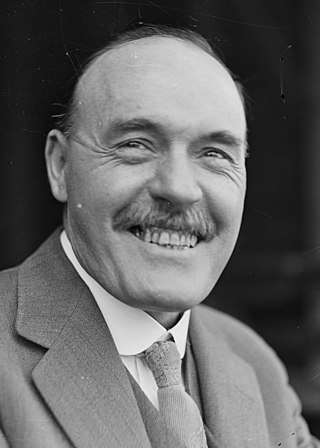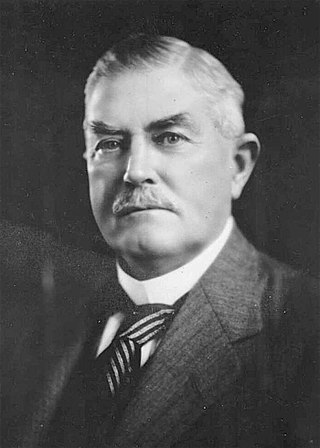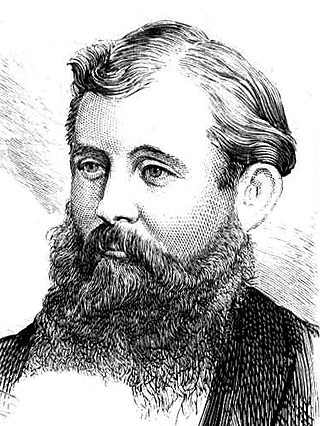Related Research Articles

The 1925 New South Wales state election was held on 30 May 1925. This election was for all of the 90 seats in the 27th New South Wales Legislative Assembly and was conducted in multiple-member constituencies using the Hare Clark single transferable vote. This was the last election to use STV to elect the NSW Assembly.
Canterbury, an electoral district of the Legislative Assembly in the Australian state of New South Wales has had two incarnations, from 1859 to 1920 and 1927 to the present.

The 1922 New South Wales state election was held on 25 March 1922. This election was for all of the 90 seats in the 26th New South Wales Legislative Assembly and it was conducted in multiple member constituencies using the Hare Clark single transferable vote. The 25th parliament of New South Wales was dissolved on 17 February 1922 by the Governor, Sir Walter Edward Davidson, on the advice of the Premier James Dooley.

John Fitzgerald Burns was an Australian politician, member of the Parliament of New South Wales, Postmaster-General in the 1870s and Colonial Treasurer in the 1880s.

The 1901 New South Wales state election was held on 3 July 1901 for all of the 125 seats in the 19th New South Wales Legislative Assembly and it was conducted in single-member constituencies with a first past the post voting system. The Parliamentary Electorates Act of 1893 had conferred the right to vote on every male British subject over 21 years of age who was resident in New South Wales for a year or more. The 19th parliament of New South Wales was dissolved on 11 June 1901 by the Governor, Lord Beauchamp, on the advice of the Premier, John See.

The 1891 New South Wales colonial election was held in the then colony of New South Wales between 17 June to 3 July 1891. This election was for all of the 141 seats in the New South Wales Legislative Assembly and it was conducted in 35 single-member constituencies, 20 2-member constituencies, 10 3-member constituencies and nine 4-member constituencies, all with a first past the post system. Part 1 of the Electoral Act of 1880 set the qualification for election on "every male subject of Her Majesty of the full age of twenty-one years and absolutely free being a natural born or naturalized subject". Seven seats were uncontested. The previous parliament of New South Wales was dissolved on 6 June 1891 by the Governor, The Earl of Jersey, on the advice of the Premier, Sir Henry Parkes.

James Eve was an English-born Australian politician.
John Wheeler was an Australian politician who was a member of the New South Wales Legislative Assembly between 1889 and 1891.
Northumberland Boroughs, an electoral district of the Legislative Assembly in the Australian state of New South Wales was created in 1856 and abolished in 1859.
The 1891 New South Wales election was for 141 members representing 74 electoral districts. The election was conducted on the basis of a simple majority or first-past-the-post voting system. In this election there were 39 multi-member districts returning 106 members. In these multi-member districts each elector could vote for as many candidates as there were vacancies. 7 of the 35 single member districts were uncontested. The average number of enrolled voters per seat was 2,166, ranging from Wilcannia (1,023) to Sturt (8,306). Sturt was an anomaly, as enrolments had increased by 5,376 since the 1889 election, and the next largest electorate was Canterbury (4,676).
A by-election for the seat of Canterbury in the New South Wales Legislative Assembly was held on 9 June 1900 because of the resignation of Varney Parkes.
A by-election for the seat of Canterbury in the New South Wales Legislative Assembly was held on 28 July 1900 because the Elections and Qualifications Committee declared that the election of Sydney Smith, with a margin of 5 votes, at the by-election in June was void because of irregularities the way the returning officer dealt with unused ballot papers and that people had voted who did not have an elector's right at the time the writ was issued.
East Sydney, an electoral district of the Legislative Assembly in the Australian state of New South Wales was created in 1859 and abolished in 1894.
Grenfell, an electoral district of the Legislative Assembly in the Australian state of New South Wales was created in 1880 and abolished in 1904.
In October 1894 the Elections and Qualifications Committee conducted a re-count of the 1894 Grenfell election, in which George Greene had been declared elected by a margin of 2 votes over Michael Loughnane (Labour). The Elections and Qualifications Committee consisted of 9 members, 5 Free Trade and four Protectionist.
In March 1879 the Elections and Qualifications Committee overturned the 1879 Mudgee by-election, in which Richard Rouse had been declared elected by a margin of 1 vote over David Buchanan.
In August 1856 the Committee of Elections and Qualifications conducted a re-count of the 1856 election for the district of Northumberland Boroughs, in which Bourn Russell had been declared elected by a margin of 8 votes over Elias Weekes.
The Hastings, an electoral district of the Legislative Assembly in the Australian state of New South Wales was created in 1859 and abolished in 1880.
Tumut, an electoral district of the Legislative Assembly in the Australian state of New South Wales, was created in 1859 and abolished in 1904.
References
- 1 2 3 Green, Antony. "1891 Canterbury". New South Wales Election Results 1856-2007. Parliament of New South Wales . Retrieved 11 April 2020.
- 1 2 3 4 Francis Suttor (2 September 1891). "Elections and Qualifications Committee" (pdf). Parliamentary Debates (Hansard) . New South Wales: Legislative Assembly. p. 1393. Retrieved 19 September 2020.
- ↑ "Canterbury petition". New South Wales Government Gazette . No. 414. 1 July 1891. p. 4977. Retrieved 19 September 2020– via Trove.